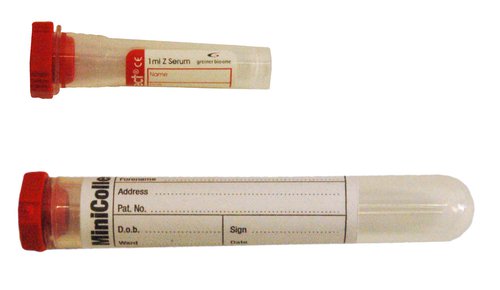Carbamazepine
Chemical Pathology
Notes
- Carbamazepine is a widely used anticonvulsant but is also used in bipolar affective disorder as a mood stabiliser and is effective in trigeminal neuralgia.
- Carbamazepine is metabolised in the liver by cytochrome P450 enzymes to form the predominant metabolite carbamazepine-10,11-epoxide which has comparable anticonvulsant activity to the parent drug.
- Loss of renal function does not cause accumulation of carbamazepine because of its extensive metabolism.
- On chronic administration, carbamazepine induces its own metabolism sometimes leading to requirement for increasing the dose after the first month of therapy to maintain effect.
- Carbamazepine metabolism is induced by phenobarbital and phenytoin but inhibited by valproate and lamotrigine.
- Levels are measured to check for compliance, efficacy or possible toxicity.
Sample requirements
- Samples should be collected immediately before the next oral dose (trough level)
- For patients on chronic treatment, wait 4 days before sampling after any change in dose.
For adults, blood taken into a 5mL gold top tube (or rust top for the Acute Unit)

For children, blood taken into a 2mL lithium heparin tube

For neonates, blood taken into a 1mL plain minicollect tube

Storage/transport
Send at ambient temperature to the laboratory on the day the sample is collected.
Required information
Relevant clinical details including current medication, time of dose and time of sample.
Turnaround times
- The assays are run throughout the day and night.
- The in-lab turnaround time is less than 24 hours.
- The test can be ordered as an urgent request.
Therapeutic range
| Sample Time | Target Range | Units |
|---|---|---|
| Trough | 4 - 12 | mg/L |
Side effects may be dose limiting and commonly seen with levels above 10 mg/L
Further information
To learn more about carbamazepine visit Lab Tests Online
Page last updated 07/05/2015